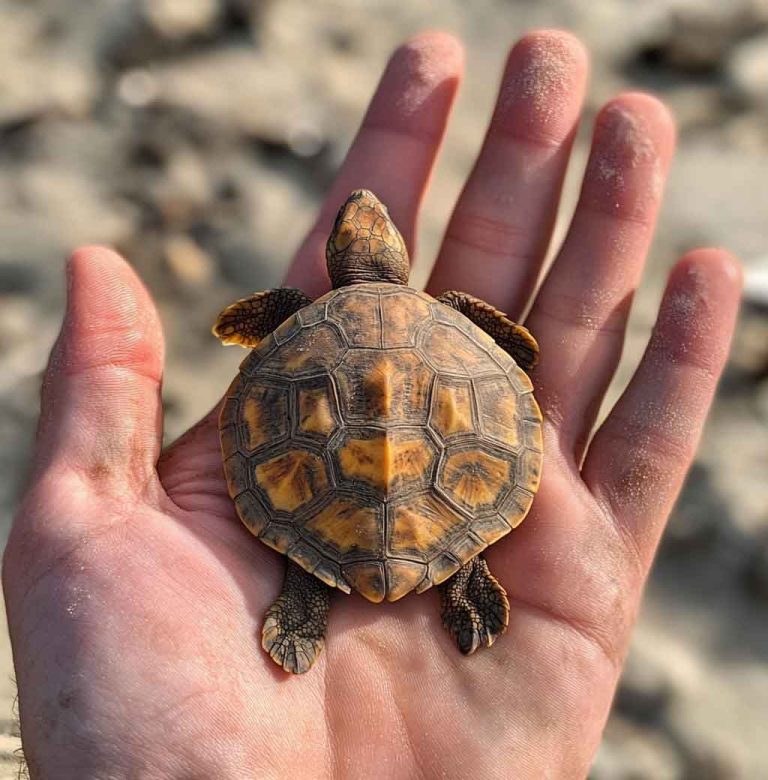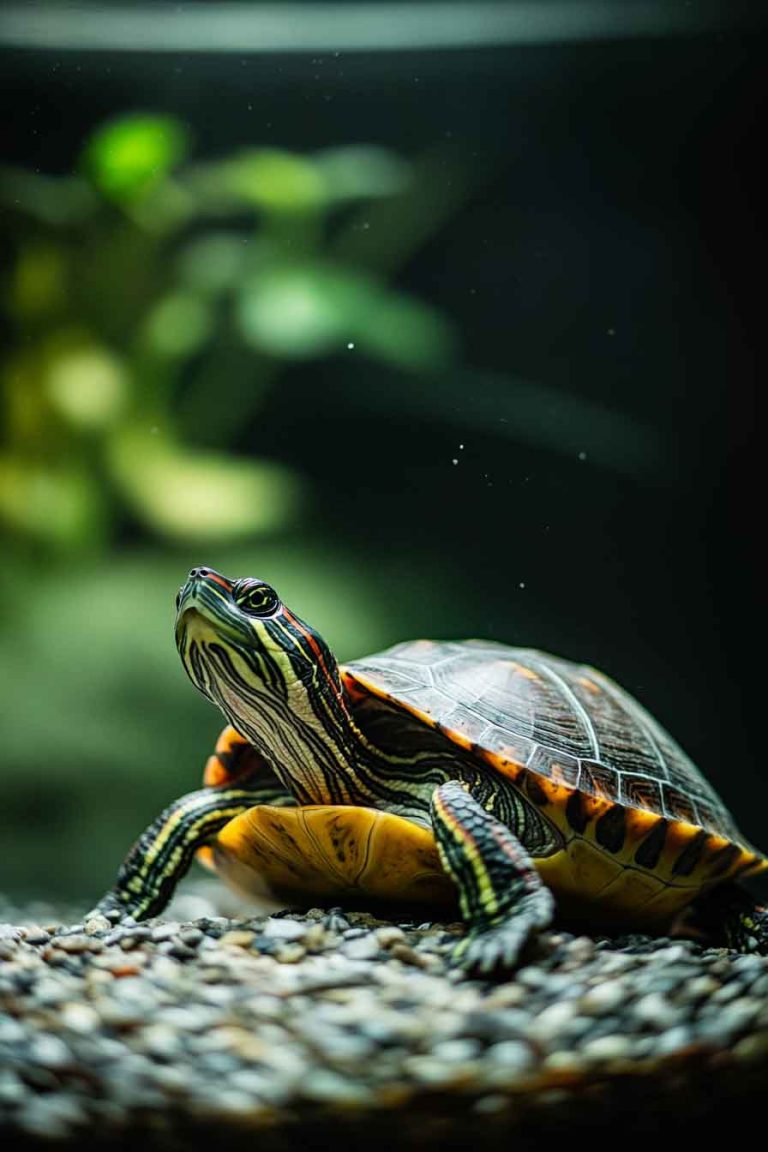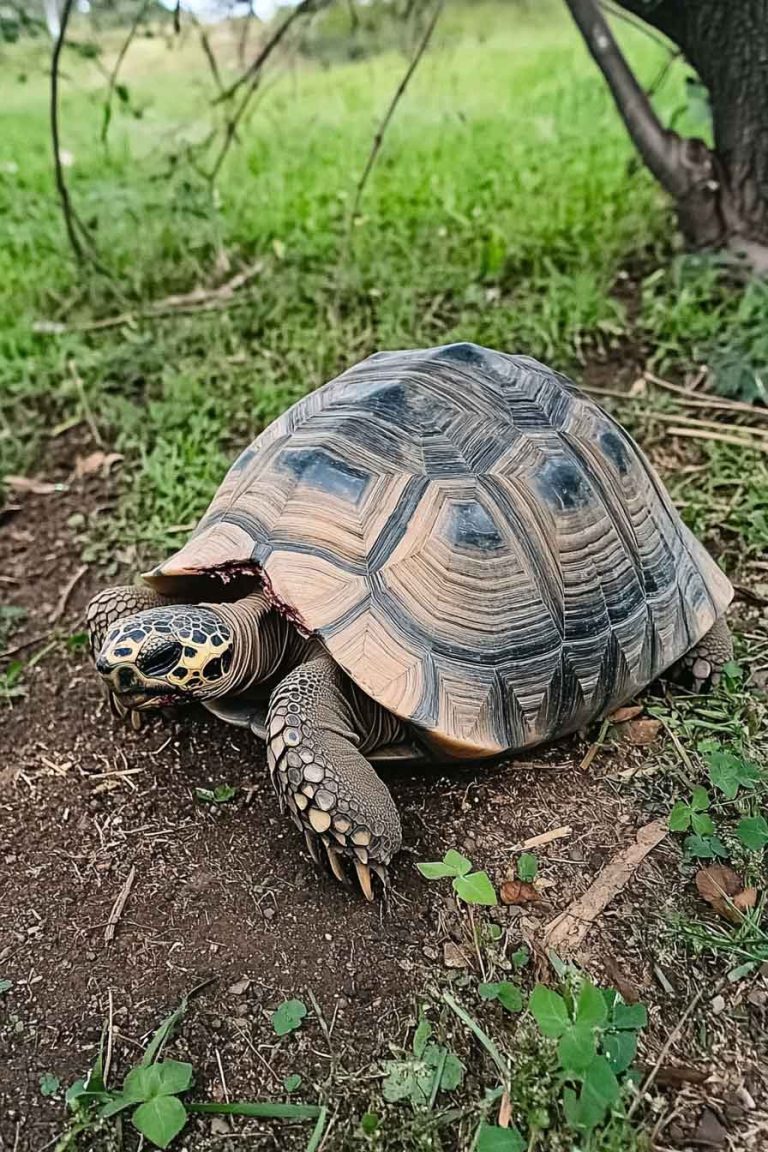How to Tell If a Turtle Is Pregnant & What to Do About It | Turtle Care Guide
Have you noticed your turtle acting a little… off lately? Maybe she’s digging in corners, refusing food, or constantly trying to climb out of her enclosure. I remember the first time I saw my female turtle doing that — I panicked, thinking she was sick. Turns out, she was pregnant. Or, to use the correct…
Have you noticed your turtle acting a little… off lately? Maybe she’s digging in corners, refusing food, or constantly trying to climb out of her enclosure. I remember the first time I saw my female turtle doing that — I panicked, thinking she was sick. Turns out, she was pregnant. Or, to use the correct term, gravid.
So, how can you tell if a turtle is pregnant? And if she is, what should you actually do about it?
Let me walk you through everything I’ve learned. Whether your turtle has mated or not, it’s totally possible for her to carry eggs. And trust me, recognizing the signs early and knowing how to support her can make a huge difference in her safety and comfort.
Can Turtles Get Pregnant Without Mating?
Yes, they can. And that’s usually the first thing that throws people off.
Just like chickens, female turtles can lay eggs even if they haven’t been with a male. These are called infertile eggs, and they won’t hatch. But here’s the kicker — the process of producing and laying them is the same as with fertile eggs. So even if your turtle lives alone, she can still become gravid and need to lay.
This happened with my red-eared slider. She hadn’t been near a male in years, yet one spring she began pacing, scratching at the walls of her tank, and acting anxious. At first, I assumed she was stressed from the weather shift. But no — she had a belly full of eggs and needed to lay them. That’s when I realized just how common and important this really is for female turtle owners to understand.
What Does “Gravid” Mean in Turtles?
In turtles, “pregnant” isn’t really the right word — we say a turtle is gravid when she’s carrying eggs.
The eggs form inside the body in the ovaries and then travel down into the oviducts, where they’re coated in a soft or hard shell depending on the species. Eventually, when the time is right, she’ll try to find a safe, quiet spot to lay them.
Even if the eggs are infertile, her body won’t just “absorb” them — they have to come out. And if she doesn’t have a proper nesting area or is too stressed to lay, she can end up egg-bound, which is a serious medical emergency.
Early Signs Your Turtle Might Be Gravid
There’s no simple test like with mammals, but based on my experience, here are the early warning signs I’ve learned to spot:
- Restlessness: She paces constantly, swims against the glass, or tries to escape the enclosure.
- Frequent digging: You might see her digging in corners, near plants, or substrate — this is her looking for a nesting site.
- Change in behavior: A normally calm turtle may act more anxious or territorial.
- Loss of appetite: Many gravid turtles go off food as laying time approaches.
- Visible straining or pushing: Especially near the back legs — like she’s trying to “go” but nothing happens.
- Lumpy or firm feeling near the rear legs: If you very gently feel behind her hind limbs, you might be able to detect the shape of the eggs.
Important: Always be extremely gentle if you attempt to feel for eggs. If you’re unsure or she seems uncomfortable, stop and consult a reptile vet. I learned the hard way that being too rough can stress or even injure her.
What Should You Do If Your Turtle Is Gravid?
So, you’ve figured out your turtle is likely carrying eggs. Now what?
First off — don’t panic. I know it can feel overwhelming, especially the first time, but the good news is that most turtles lay eggs just fine on their own if they have the right environment. The key is to provide her with a comfortable, safe place to do what nature built her to do.
Let’s walk through everything you need to help your turtle lay her eggs safely — and prevent serious complications like egg binding.
Set Up a Nesting Area
This step is critical. If a turtle doesn’t have access to a proper nesting site, she may hold the eggs in, which can lead to stress, illness, and even death.
Here’s how I set up a simple nesting box for my female:
For Aquatic Turtles:
- Use a large plastic bin or container (at least twice the length of your turtle).
- Fill it with moist, warm substrate — I use a 50/50 mix of clean topsoil and play sand.
- Make sure the substrate is deep enough (about 5–6 inches) for digging.
- Keep it slightly damp — not soggy, just enough to hold shape.
- Provide some privacy. I like to partially cover the container or place it in a quiet room.
- Gently place your turtle inside and watch from a distance.
For Terrestrial Turtles (like box turtles):
- You can sometimes use the existing enclosure — just make sure there’s enough space and depth.
- Again, provide privacy, soft digging substrate, and minimal disturbances.
Tip: If your turtle keeps digging but not laying, don’t force it. Sometimes it takes a few tries before she finds the “perfect” spot. Be patient.
Keep Her Hydrated and Warm
Just like in nature, gravid turtles do best with stable heat and hydration. Here’s what I always do:
- Make sure water is clean and shallow enough for easy soaking.
- Keep the basking area between 85–90°F (29–32°C).
- Ambient temps should stay around 75–80°F (24–27°C).
- Mist the nesting box if it starts to dry out.
A dehydrated or cold turtle is much more likely to retain eggs and become egg-bound. I’ve found that bumping the temps slightly during nesting season really helps encourage healthy laying.
Don’t Handle Her More Than Necessary
This part’s tough — I know we want to help. But trust me, handling can increase stress and delay egg-laying. I only touch my gravid turtle when absolutely necessary — like moving her gently to the nesting box or checking for signs of distress.
Watch her behavior instead. If she starts digging, let her. If she rests, that’s okay too. It’s a slow process, and the more you leave her alone, the better chance she has of completing it naturally.
What If She Won’t Lay?
This is something I went through once — and it’s scary. A turtle that carries eggs but doesn’t lay for days, especially if she’s straining, refusing food, or acting lethargic, could be egg-bound.
This is a medical emergency. The eggs can calcify or rupture inside her, causing internal damage or infection.
Signs of Egg Binding:
- Digging but never laying
- Swollen, bloated belly
- Weak back legs or dragging limbs
- No appetite for days
- Lethargy or hiding constantly
What To Do:
- Soak her in warm water baths (around 85°F) for 20–30 minutes a couple times a day. It helps relax her muscles and encourages laying.
- Offer calcium-rich foods like cuttlebone or calcium-dusted greens.
- If nothing works in 2–3 days, take her to a reptile vet immediately. X-rays can confirm the eggs and treatment may involve hormone injections or surgery.
I once caught it just in time. My turtle had five large eggs stuck and needed help from the vet to pass them safely. If I’d waited any longer, I could’ve lost her.
What Happens After Your Turtle Lays Her Eggs?
Once your turtle lays her eggs, you’ll probably notice an immediate change — she’ll be calmer, maybe a little tired, but generally more relaxed. It’s like a weight has literally been lifted. I’ve seen it every time — that shift from anxious pacing to peaceful basking.
Here’s what I usually do after she lays:
1. Let Her Rest
She’s just been through a physically exhausting process. Don’t handle her unless necessary. Give her quiet space, and make sure her basking area is warm and her tank is clean.
2. Rehydrate and Offer Food
After laying, most turtles are thirsty and hungry. I always offer a shallow soaking dish for her to rehydrate, followed by her favorite foods — leafy greens, pellets, or insects depending on her species.
If she refuses food for another day or two, don’t worry — it’s normal. Just monitor her.
3. Remove the Eggs (If Not Incubating)
If your turtle hasn’t been with a male, the eggs are infertile. I usually dispose of them gently after she’s finished laying and moved away.
However, if there was a male involved and you plan to incubate the eggs:
- Carefully transfer them to an incubator or sealed container with damp vermiculite.
- Do not rotate or flip them. Mark the tops gently with a pencil so you keep orientation correct.
- Incubation times vary by species — usually 60–90 days for aquatic turtles.
FAQ: Turtle Pregnancy Questions Answered
1. How many eggs do turtles lay at once?
It depends on the species. Some, like box turtles, lay 3–6 eggs. Others, like red-eared sliders, can lay 10–20 eggs per clutch, and sometimes multiple clutches in one season.
2. Do turtles lay eggs every year?
Yes — especially if they’re healthy and well-fed. Even without a male, female turtles may go through this cycle annually, especially during the spring and summer months.
3. Can a turtle die from being egg-bound?
Unfortunately, yes. If the eggs can’t pass, they can cause internal damage or infection. That’s why spotting the signs early and seeking vet help is crucial.
4. How long does it take for a turtle to lay her eggs once gravid?
Typically within 2–4 weeks after the eggs form, though behavior changes might show up earlier. Once she finds a proper spot, she usually lays them all in one session, which can take a few hours.
5. Should I handle my turtle when she’s gravid?
As little as possible. Handling adds stress, and stress can delay egg-laying or cause complications. Only move her when needed — like into a nesting box or bath.
Final Words
If you’ve got a female turtle, it’s just a matter of time before she goes through the egg-laying process — whether she’s been with a male or not. Knowing the signs of pregnancy, providing a proper nesting area, and watching for warning signs is key to helping her stay healthy.
I’ve gone through this more than once, and I can tell you — it’s always a little nerve-wracking, but also kind of magical. There’s something really special about seeing nature take its course right in your own tank or backyard.
Thanks for sticking with me through this guide. If you’re dealing with a gravid turtle right now and have questions, feel free to check out my other posts — or reach out. You’re not alone, and you’ve got this.







